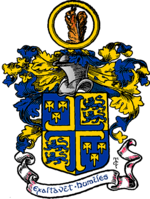King Edward VI Aston School
King Edward VI Aston School is a selective, all-boys grammar school and specialist sports college. The school, designed by Birmingham architect J.A. Chatwin, opened in 1883 and is still, with additional buildings, located on its original site, in the Aston area of Birmingham, England. King Edward VI Aston Grammar School does not charge tuition fees; pupils must pass an 11-plus entrance exam to get into the school. The King Edward Schools are fiercely competitive to get admission to. The King Edward VI Foundation holds its exams at the same time, and generally, a candidiate will sit one exam for multiple schools within the foundation. The school is part of the Foundation of the Schools of King Edward VI, which runs nine schools in Birmingham. Currently, Aston has 963 boys.The current headteacher is Matt Brady.
Excerpt from the Wikipedia article King Edward VI Aston School (License: CC BY-SA 3.0, Authors).King Edward VI Aston School
Frederick Road, Birmingham
Geographical coordinates (GPS) Address External links Nearby Places Show on map
Geographical coordinates (GPS)
| Latitude | Longitude |
|---|---|
| N 52.5036536 ° | E -1.8855758 ° |
Address
King Edward VI Aston School
Frederick Road
B6 6DJ Birmingham
England, United Kingdom
Open on Google Maps




